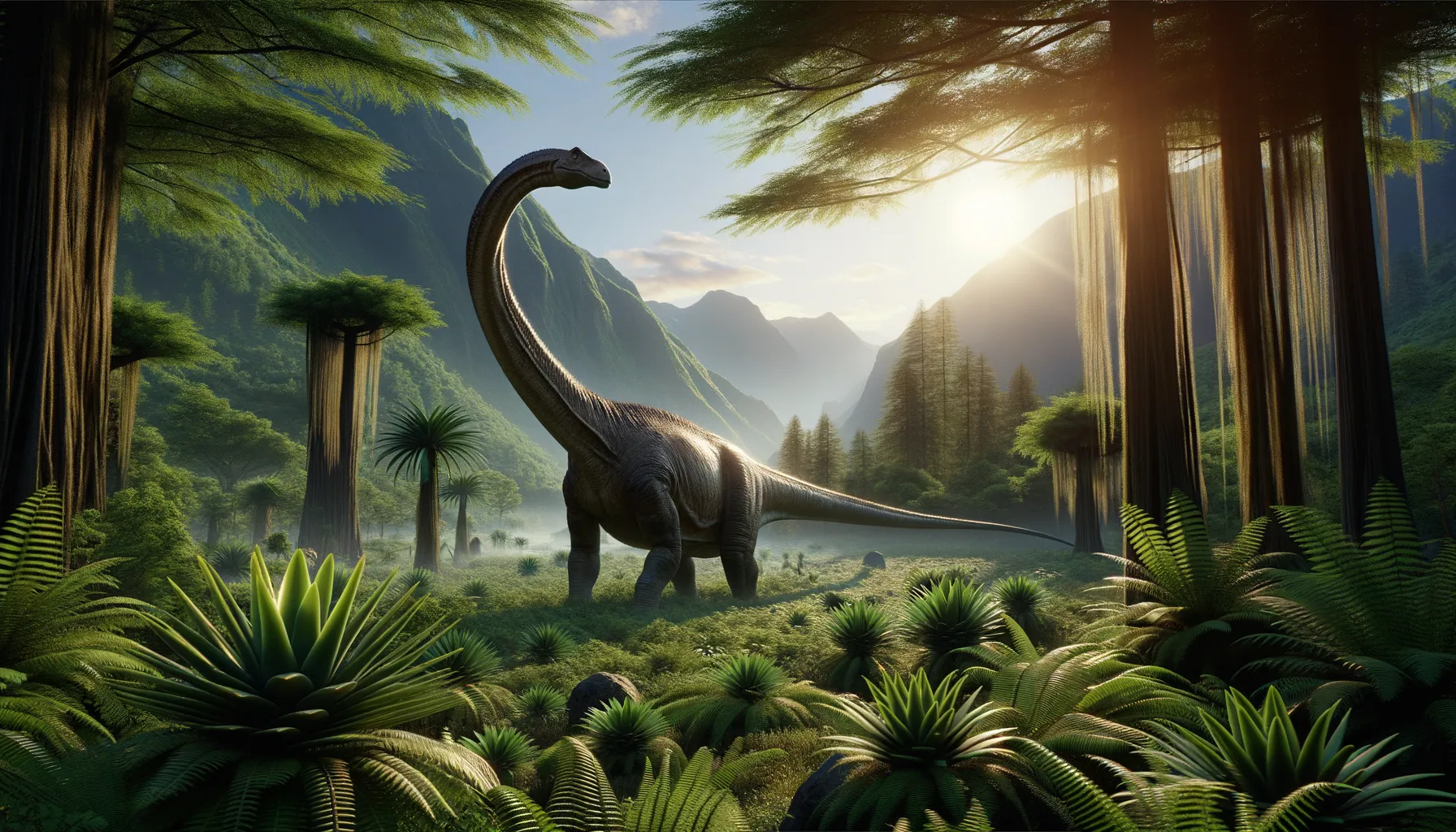
Lingwulong
The earliest evolved sauropod surprise!
Period
Jurassic
Length
Approximately 15 meters long.
Height
Up to 12 meters tall.
Weight
Around 15 to 20 tons.
Lingwulong was a long-necked dinosaur belonging to the sauropod group, known for its immense size and herbivorous diet. It lived during the Jurassic period and was first discovered in China. This dinosaur was notable for its advanced evolution, showing that some sauropods developed earlier than previously thought. The discovery of Lingwulong has provided important insights into the diversity and distribution of ancient sauropods.
Diet
Lingwulong was herbivorous and likely fed on plants available in its environment. With its long neck, it could reach higher vegetation, enabling it to access leaves and foliage that were out of reach for other species. Its diet would have comprised a variety of plant material, adjusting as necessary to the seasonal availability.
Hunting
As a herbivore, Lingwulong did not hunt. Instead, it depended on its long neck to browse foliage. Its feeding strategy relied on its size to access a wide range of plant materials.
Environmental challenges
Lingwulong lived in an era where climate changes could alter its habitat and the availability of resources. Fluctuations in temperature and plant life could lead to challenges in finding sufficient food. Predators in the environment would have posed threats, especially to younger or weaker individuals. Despite its size, survival required adaptations to these changing conditions.
Speed
Likely slow due to its massive size.
Lifespan
Estimated to live several decades.
First discovery
First discovered in 2005 in China.
Fun Facts
- Lingwulong is the earliest known member of the diplodocoid dinosaurs, which lived during the Jurassic period.
- It was discovered in China, providing evidence that these types of dinosaurs were present in Asia much earlier than previously thought.
- Lingwulong belonged to a group of long-necked dinosaurs; its name means 'Ling Wu dragon'.
- This dinosaur has significantly changed what scientists understand about the geographical spread of dinosaur groups.
- Lingwulong fossils were found in a part of China known as the Ningxia Hui Autonomous Region.
- The discovery of Lingwulong suggests a much earlier diversification of the sauropod dinosaurs than scientists had believed.
- It is estimated that Lingwulong lived around 174 million years ago, setting a new timeline for diplodocoid evolution.
Growth and Development
Lingwulong, like other sauropods, likely experienced rapid growth early in life. This fast development was crucial for survival, as a larger size provided some protection against predators. The growth rate then slowed as it reached maturity, focusing more on maintaining its massive body. Social learning might have played a role in guiding young dinosaurs through the complexities of their environment.
Habitat
Lingwulong inhabited regions which were rich in vegetation, providing ample food sources. Its environment was likely open with scattered forests, allowing it to maneuver its long neck amongst trees and shrubs. Rivers and lakes might have been part of its habitat, essential for maintaining sufficient hydration. Such environments attracted diverse species, each interacting within this complex ecosystem.
Interaction with other species
Lingwulong shared its habitat with various dinosaurs and ancient species, often competing for food resources. While its size provided some deterrence against predators, alliances with other sauropods might have offered additional protection. It coexisted with smaller herbivores and predators that roamed the same plains and forests.
Natural lifespan
Lingwulong might have lived up to 70-80 years naturally.
Reproduction
Reproduction involved laying eggs, similar to other sauropods. Nesting sites would have been selected with care to protect the eggs from environmental threats and predators. Hatchlings required a safe nursery area to grow during their vulnerable early days. Parental involvement, while limited, may have included nesting site selection and protection of the young.
Social behaviour
Lingwulong might have formed small groups or herds, as is common in many sauropods. This social structure provided safety in numbers against predators. Communication within the group could have involved vocalizations or physical signals, contributing to herd coordination. Such behavior would have strengthened social bonds, assisting them in navigation and survival.
Fossil locations
Fossils of Lingwulong have been primarily located in China, offering critical data about its existence and distribution. These discoveries have provided significant insights into the sauropod timeline, challenging previous assumptions. The fossil sites offer a window into the diverse ecosystems in which this dinosaur thrived. Further exploration might reveal additional locales, expanding our understanding of its ancient range.
